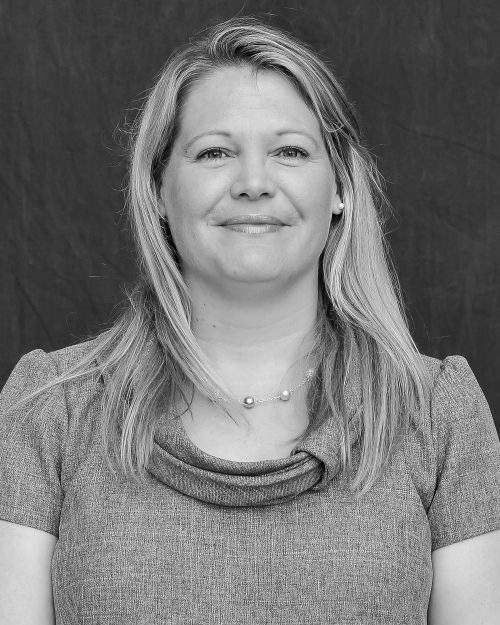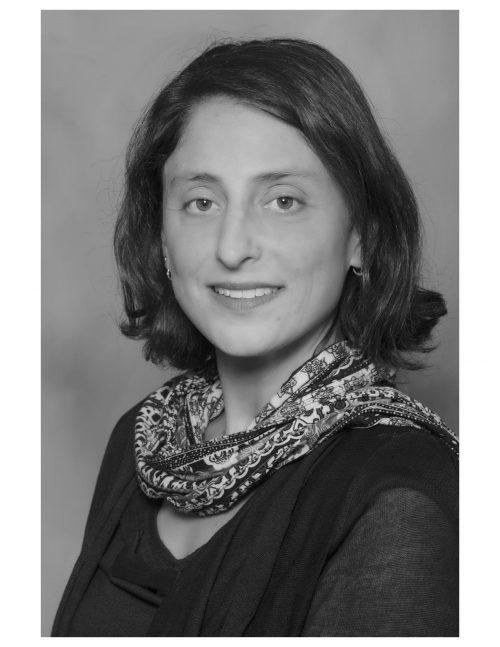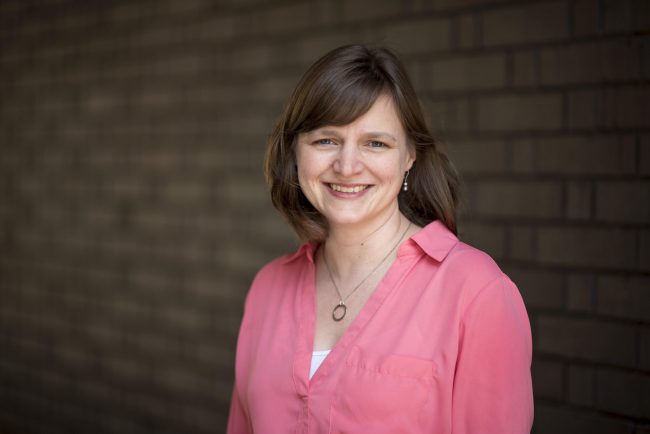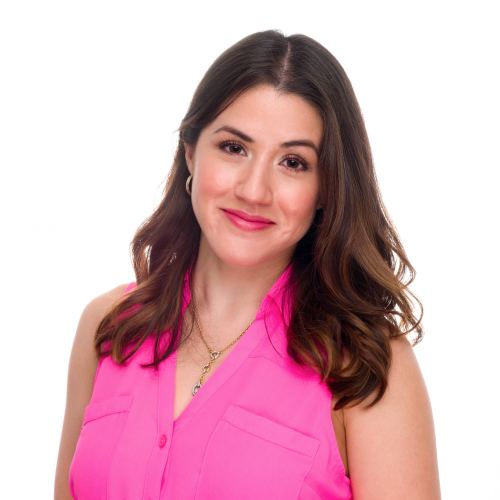1: Introduction to Biological Anthropology
- Last updated
- Save as PDF
- Page ID
- 66705
Katie Nelson, Ph.D., Inver Hills Community College
Lara Braff, Ph.D., Grossmont College
Beth Shook, Ph.D., California State University, Chico
Kelsie Aguilera, M.A., Leeward Community College
Learning Objectives
- Define anthropology and the main anthropological approaches.
- Describe the origins and early development of anthropology.
- Identify the four subdisciplines of anthropology and specify the focus of each one.
- Define biological anthropology, describe its key questions, and identify major subfields.
- Explain key components of the scientific method.
- Differentiate between hypotheses, theories, and laws.
- Differentiate science from other ways of knowing.
The first time one of the authors [Katie Nelson] heard of biological anthropology, she was a first-year college student at Macalester College in Saint Paul, Minnesota, taking her first-ever anthropology course. Before she enrolled in the class she didn’t really know what anthropology meant. She knew it had something to do with people, but didn’t know how it all fit together. The course description appealed to her, so she signed up. She quickly learned that anthropology was the study of humans and that it was an incredibly broad discipline that included explorations of cultural diversity, human origins, past human societies, and human languages, among a great many other subjects. She had always been interested in learning about people. She enjoyed observing the different ways people interacted in public spaces, like the mall or the zoo. She enjoyed learning Spanish in high school and loved listening to how people who spoke different languages produced different sounds. She was curious about how people inherited unique characteristics from their parents and was especially intrigued by immigration and migration and what caused people to uproot themselves and move to another part of the world. During the second week of class she began to learn about biological anthropology and some of the leading theories for how and why ancient humans left Africa and migrated throughout the world. As she sat in class, she vividly remembers imagining a small group of ancient humans walking barefoot together through the African savannah. She imagined what they wore, what their language sounded like, how they held hands, how they shared food, and so on. She wondered why they were migrating and what they would miss about their homeland. She was hooked on anthropology!
About the Authors
Katie Nelson, Ph.D.
Inver Hills Community College, kanelson@inverhills.edu, www.kanelson.com

Katie Nelson is an instructor of anthropology at Inver Hills Community College. Her research focuses on migration in human history and citizenship(s), identity, belonging and state mechanisms of migrant control in the contemporary United States, Mexico, and Morocco.
She received her B.A. in anthropology and Latin American studies from Macalester College, her M.A. in anthropology from the University of California, Santa Barbara, an M.A. in education and instructional technology from the University of Saint Thomas, and her Ph.D. from CIESAS Occidente (Centro de Investigaciones y Estudios Superiores en Antropología Social –Center for Research and Higher Education in Social Anthropology), based in Guadalajara, Mexico.
Katie views teaching and learning as central to her practice as an anthropologist and as mutually reinforcing elements of her professional life. She is the former chair of the Teaching Anthropology Interest Group (2016–2018) of the General Anthropology Division of the American Anthropological Association and currently serves as the online content editor for theTeaching and Learning Anthropology Journal. She has contributed to several open access textbook projects, both as an author and an editor, and views the affordability of quality learning materials as an important piece of the equity and inclusion puzzle in higher education.
Lara Braff, Ph.D.
Grossmont College, Lara.Braff@gcccd.edu

Lara Braff is an instructor of anthropology at Grossmont College, where she teaches cultural anthropology and biological anthropology courses. She received her B.A. in anthropology and Spanish from the University of California at Berkeley and both her M.A. and Ph.D. in comparative human development from the University of Chicago, where she specialized in medical anthropology. Her research has focused on social identities and disparities in the context of reproduction and medicine in Mexico and the U.S..
Lara’s concerns about the social ramifications of inequality have guided her research projects, teaching practices, and involvement with open access projects like this textbook. Recently, motivated by the desire to make college more affordable and accessible to all students, she has been serving as co-coordinator of Grossmont College’s Open Educational Resources (OER) and Zero Textbook Cost (ZTC) degree initiatives.
Beth Shook, Ph.D.
California State University, Chico, bashook@csuchico.edu

Beth Shook is a lecturer in the anthropology department at California State University, Chico. She received her B.A. in anthropology and in molecular biology from Cornell College (in Mount Vernon, Iowa) and her M.A. and Ph.D. in anthropology from the University of California, Davis. While she is broadly trained in anthropology, her research has been in molecular anthropology and research interests have focused on prehistory, history, and contemporary concerns of indigenous North Americans.
Beth enjoys teaching courses in multiple subdisciplines, as well as mentoring graduate students in teaching. Additionally, she coleads Chico State’s Affordable Learning Solutions (CAL$) program, is committed to programs that prioritize diversity, and serves on the Society for Anthropology in Community Colleges (SACC) Executive Board as vice president for Membership and Development & Regional Networks chair.
Kelsie Aguilera, M.A.
Leeward Community College, kelsieag@hawaii.edu

Kelsie Aguilera is an assistant professor of anthropology at Leeward Community College. Located on the island of O’ahu, Leeward Community College is part of the University of Hawai’i System and holds a special commitment to Native Hawaiian education. At Leeward, Kelsie teaches anthropology courses in all of the subdisciplines and serves on the Open Educational Resources committee. Committed to the open-door mission of community colleges, she previously taught anthropology at Miami-Dade College.
Kelsie received her B.A. in anthropology from the University of Miami and her M.A. in anthropology from Binghamton University. She serves as treasurer on the executive board of the Society for Anthropology in Community Colleges (SACC) and continues to work hard toward making anthropology accessible and relevant for her students.
For Further Exploration
American Anthropological Association website: https://www.americananthro.org/
Partners in Health: https://www.pih.org/
Understanding Science. 2018. University of California Museum of Paleontology. 3 January. www.understandingscience.org.
Anticole, Matt. What’s the difference between a scientific law and theory? TedEd Lesson. https://ed.ted.com/lessons/what-s-the-difference-between-a-scientific-law-and-theory-matt-anticole#watch
References
Bigham, Abigail W. 2016. “Genetics of Human Origin and Evolution: High-Altitude Adaptations.” Current Opinion in Genetics & Development 41: 8–13.
Binford, Leigh. 2016. The El Mozote Massacre: Human Rights and Global Implications. Tucson: University of Arizona Press.
Bourgois, Phillippe. 2003. In Search of Respect. Cambridge: Cambridge University Press.
Durkheim, Emile. 2008. The Elementary Forms of Religious Life. Translated by Carol Cosman and Edited by Mark S. Cladis. New York: Oxford University Press.
Farmer, Paul. 2006. AIDS and Accusation: Haiti and the Geography of Blame. Berkeley: University of California Press.
Farmer, Paul, Matthew Basilico, Vanessa Kerry, Madeleine Ballard, Anne Becker, Gene Bukhman, Ophelia Dahl, et al. “Global Health Priorities for the Early Twenty-first Century.” In Reimagining Global Health: An Introduction, edited by Paul Farmer, Jim Yong Kim, Arthur Kleinman, and Matthew Basilico, 302–339. Berkeley: University of California Press.
Goodall, Jane. 1996. My Life With the Chimpanzees. Aladdin Press.
Jablonski, Nina. 2012. Living Color: The Biological and Social Meaning of Skin Color. Berkeley: University of California Press.
Kenyon, Kathleen. 1979. Archaeology in the Holy Land. New York: W.W. Norton & Co. Malotki, Ekkehart. 1983. Hopi Time. The Hague: Mouton.
McIntosh-Smith, Tim. 2002. The Travels of Ibn Battutah. London: Picador.
Mead, Margaret. 1928. Coming of Age in Samoa. Oxford: Morrow.
Ochs, Elinor, and Bambi B. Schieffelin. 2012. “The theory of language socialization.” In The Handbook of Language Socialization. Edited by Alessandro Duranti, Elinor Ochs, and Bambi Schieffelin, 1–21. Malden, MA: Wiley-Blackwell.
Prüfer, Kay, Kasper Munch, Ines Hellmann, Keiko Akagi, Jason R. Miller, Brian Walenz, Sergey Koren, et al. 2012. “The Bonobo Genome Compared with the Chimpanzee and Human Genomes.” Nature 486 (June): 527–531.
Rathje, William, and Cullen Murphy. 1992. Rubbish!: The Archaeology of Garbage. New York: HarperCollins.
Relethford, John, and Deborah Bolnick. 2018. Reflections of our Past: How Human History Is Revealed in our Genes. 2nd ed. New York: Routledge.
Whorf, Benjamin. 1956. Language, Thought, and Reality. Cambridge: MIT Press.
Wood, Frances. 2004. The Silk Road: Two Thousand Years in the Heart of Asia. Berkeley: University of California Press.
Acknowledgment
We are grateful to Lahcen Mourad, J.D., Moroccan Arabic educator and scholar, for sharing insights from his scholarship on the legacy of Ibn Battuta and his influence on the early development of the social sciences.
Figure Attributions
Figure 1.1 Untitled by Mission de I’ONU au Mali – UN Mission in Mali/Gema Cortes is under a CC BY-NC-SA 2.0 License; Untitled in Middle East by Mark Fischer is used under a CC-BY-SA 2.0 License; Smiling Blonde Girl by Egor Gribanov from St. Petersburg, Russia is under aCC BY 2.0 License; Steppe Gobi Desert Mongolia Nomadic Man Travel at MaxPixel has been designated to the public domain (CC0).
Figure 1.2 Holism original to Explorations: An Open Invitation to Biological Anthropology by Mary Nelson is under a CC BY-NC 4.0 License.
Figure 1.3 Untitled by Luke Berhow is under a CC BY-NC 4.0 License.
Figure 1.4 Statue of Zhang Qian in Chenggu by Debi Lander is used with permission.
Figure 1.5 Ibn Batuta en Égypte by Léon Benett is in the public domain.
Figure 1.6 Charles Darwin Standing by unknown photographer is in the public domain.
Figure 1.7 FranzBoas by unknown photographer is in the public domain. This image is from the collection of the Canadian Museum of Civilization, Negative 79-796.
Figure 1.8 Subdisciplines of anthropology original to Explorations: An Open Invitation to Biological Anthropology by Mary Nelson is under a CC BY-NC 4.0 License.
Figure 1.9 Margaret Mead – Image from page 47 of “A brief expedition into science at the American Museum of Natural History” (1969) by Internet Archive Book Images is in the public domain.
Figure 1.10 Babytalk by Torbein Rønning is under a CC BY-NC-ND 2.0 License.
Figure 1.11 Jerycho8 by A. Sobkowski has been designated to the public domain (CC0).
Figure 1.12 Chimpanzees by Klaus Post is under a CC BY 2.0License.
Figure 1.13 Untitled at pxhere.com has been designated to the public domain (CC0).
Figure 1.14 PEF-with-mom-and-baby—Quy-Ton-12-2003 1-1-310 by Cjmadson is under a CC BY 3.0 License.
Figure 1.15 Head-Measurer of Tremearne (side view) by A.J.N. Tremearne, Man 15 (1914): 87-88 is in the public domain.
Figure 1.16 Subfields of biological anthropology original to Explorations: An Open Invitation to Biological Anthropology by Mary Nelson is under a CC BY-NC 4.0 License.
Figure 1.17 Mountain gorilla finger detail.KMRA by Kurt Ackermann (English Wikipedia username KMRA) is under a CC BY 2.5 License.
Figure 1.18 Donald Johanson 2009 by Julesasu has been designated to the public domain (CC0 1.0).
Figure 1.19 Oetzi the Iceman Rekonstruktion 1 by Thilo Parg is under a CC BY-SA 3.0 License.
Figure 1.20 Untitled by Presidencia El Salvadorhas been designated to the public domain (CC0 1.0).
Figure 1.21 Child Scientists by Beth Shook is under a CC BY-NC 4.0 License.
Figure 1.22 Science Checklist original to Explorations: An Open Invitation to Biological Anthropology is under a CC BY-NC 4.0 License.
Figure 1.23 Simple depiction of the scientific method original to Explorations: An Open Invitation to Biological Anthropology is under a CC BY-NC 4.0 License.
Figure 1.24 Complex Science Flowchart (2018) by Understanding Science, University of California Museum of Paleontology is used by permission and available here under a CC BY-NC 4.0 License.
Figure 1.25 Eureka! Archimede by Giammaria Mazzucchelli is in the public domain.

